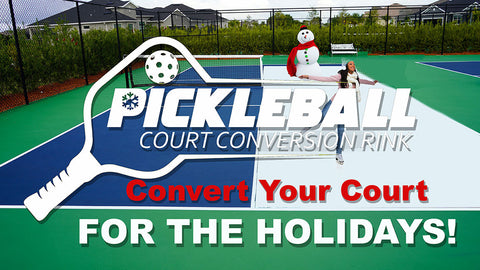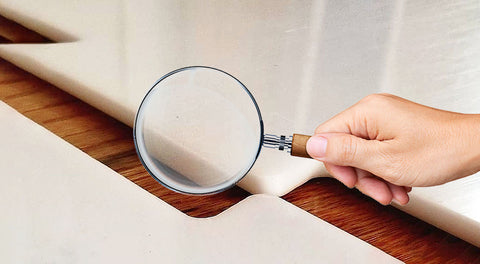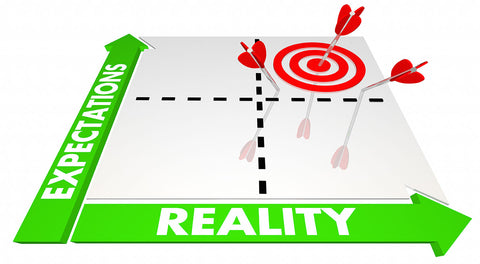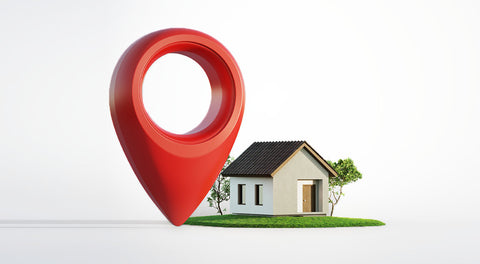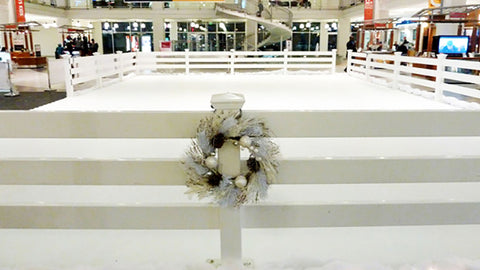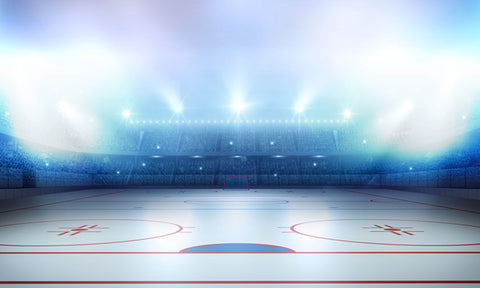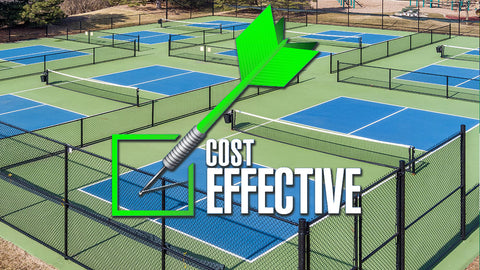How Long Is The Average Hockey Game? Best Game Length Guide
Ice hockey is a fast-paced and exciting sport that has captured the interest of fans around the world.
One common question that arises among hockey enthusiasts and newcomers alike is about the duration of an average hockey game.
Knowing the length of a game can help fans plan their schedules and better understand the sport's dynamics.
Play Hockey Right At Home With Your Own PolyGlide Ice Rink
Hockey games are comprised of three 20-minute periods, totaling 60 minutes of playtime.
However, the overall duration of a game extends beyond the on-ice action as there are intermissions between periods, each lasting around 15-18 minutes.
Considering these breaks, as well as other factors such as commercial breaks during professional games, an NHL hockey game typically lasts around 2.5 to 3 hours.
Understanding the intricacies of game duration contributes to a more comprehensive grasp of the sport and enhances the overall enjoyment for fans.
Hockey Game Basics

Periods and Intermissions
Between these periods, there are two intermissions that give players a chance to rest and strategize. In an NHL game, these intermissions typically last around 17-18 minutes, while high school games have 12-minute intermissions.
Ice Hockey vs. NHL Hockey
Although the regulation playtime for both amateur ice hockey games and NHL hockey games is 60 minutes, there are some differences in the game structures.
For instance, if a game ends in a tie during regulation time, it will proceed to overtime, which varies in duration by league or level of competition.
Whereas ice hockey games can have various overtime formats, including five-minute sudden-death overtime periods and shootouts, NHL hockey games feature a five-minute, three-on-three overtime before proceeding to a shootout if necessary.
Additionally, stoppages in play such as icing, penalties, and the need to reset the puck can make the overall duration of both ice and NHL hockey games longer.
On average, an NHL hockey game can last around two and a half hours with these stoppages included.
NHL Game Duration

Average Game Length
An NHL hockey game consists of three 20-minute periods, making the total playing time 60 minutes.
In addition to playing time, there are two intermissions of 17 minutes and 30 seconds each between periods, allowing for rest and ice cleaning as mentioned here.
The average NHL game length, including those intermissions and commercial breaks, is about 2 hours and 15 minutes to 3 hours, depending on the specific factors affecting the game.
Factors Affecting Duration
There are several factors that can impact the duration of NHL games, and these can vary from game to game.
Some of these factors include:
-
Overtime and shootouts: If the game remains tied after the three regulation periods, an overtime period (5 minutes for regular-season games) or a shootout may be necessary, adding around 10 minutes to the total game length as seen here.
-
Penalties and stoppages: The occurrence of penalties, offside calls, and other events causing stoppages in play can affect the real time it takes to complete the game. Referees play a crucial role in maintaining the flow of the game and handling stoppages.
-
Commercial breaks: In professional leagues like the NHL, there are commercial breaks during the game, which can add to the overall runtime of the match.
-
Coach's challenges and video reviews: Coaches and referees can initiate video reviews for specific situations, such as goalie interference or offside rulings, which may extend the game duration due to the time spent reviewing and discussing these decisions.
-
Start time and scheduling: NHL games are typically scheduled within certain time slots, and their lengths can vary depending on the start time, day of the week, and the presence of pre-game or post-game events.
While the above factors can influence the duration of an NHL game, the National Hockey League ensures that the games are as efficient as possible to maintain a balance between exciting gameplay and fitting within the designated time slots for fans and broadcasters.
Differences in game lengths may also be encountered in recreational hockey or other professional hockey leagues, but the NHL generally follows a consistent format to manage game durations effectively.
Overtime and Playoffs

Regular Season Overtime
In the NHL regular season, games that are tied at the end of regulation time proceed to a 5-minute 3-on-3 sudden-death overtime period.
If no team scores during this period, the game moves to a shootout.
In the overtime period, teams start with 3 players each, excluding goalies.
Some key points in regular season overtime are:
- Any penalties carry over from regulation into overtime
- Goalies can be substituted during stoppages
- Teams are allowed to use their one 30-second timeout if they have not already used it during regulation
Playoff Overtime
When it comes to the NHL playoffs, the overtime rules differ from those in the regular season.
Playoff games tied after regulation time continue with 20-minute periods of 5-on-5 play until a goal is scored, concluding the game with a sudden-death victory.
There is no shootout in playoff overtime.
Key aspects of playoff overtime include:
- Each overtime period is a full 20 minutes
- The game continues until there is a winner
- Teams switch ends after each overtime period
- There are no timeouts in overtime
The Stanley Cup playoffs have seen some of the longest and most intense games in NHL history due to this sudden-death overtime rule.
Overtime periods can sometimes go on for several extra sessions before a goal is finally scored and a winner is determined, as seen in the NHL's longest playoff games.
Additional Time Factors

Warmups and Cool-downs
Before a hockey game begins, both teams engage in warm-up activities, including stretching exercises and skating drills.
Goaltenders and skaters alike need this preparation time to be fully prepared for the intensity of hockey gameplay.
Warmup routines can vary between leagues, such as major junior hockey or college hockey, but they generally last for 15-30 minutes.
After the game concludes, players also participate in cool-down exercises to help reduce the risk of injury and facilitate muscle recovery.
Hand-eye coordination and focus are essential for hockey athletes, as the sport involves quick movements and fast-paced action.
Pre-game warm-ups help players achieve the necessary level of readiness and excitement before stepping onto the ice.
Injuries, Penalties and Commercial Breaks
Injuries
Injuries are an unfortunate part of hockey, as it is a physical sport with a high risk of contact.
When a player is injured during a game, play may be stopped temporarily for the injured player to receive medical attention and, if necessary, be safely removed from the ice.
Depending on the severity of the injury, this pause can significantly impact the overall game duration.
Penalties
Penalties are another factor that can affect the length of a hockey game.
Minor infractions, such as tripping or hooking, result in the offending player spending two minutes in the penalty box – giving the opposing team a power play opportunity.
More severe penalties, like fighting, can result in a 5-minute penalty for each involved player.
The number and duration of penalties can vary between games, as tactics and gameplay styles affect the frequency of rulebook violations.

Consequently, a high number of penalties can lead to extended stop time and a longer overall game.
Commercials
Furthermore, broadcasters often take advantage of injury and penalty stoppages for commercial breaks, which can further extend the game duration for viewers.
Ads contribute to the revenue stream for all teams, so incorporating these breaks benefits both the NHL and its stakeholders.
To ensure fair and accurate game outcomes, referees may consult replay footage to review controversial plays, goals, or penalties.
The time required for these reviews can also lengthen the overall game duration.
With all of these additional time factors considered, the duration of a hockey game can be difficult to predict.
Nonetheless, the excitement and intensity of the sport continue to draw fans and athletes alike, making hockey a thrilling experience for all involved parties.
Conclusion
Hockey games, specifically NHL games, consist of three 20-minute periods, resulting in 60 minutes of actual playtime.
However, due to 17-minute and 30-second intermissions between each period, along with stoppages and TV breaks, the overall length of an NHL hockey game typically spans between two hours and 15 minutes to three hours.
The same 60-minute playtime rule applies to other hockey leagues such as the AHL, ECHL, KHL, WHL, and OHL.
It's important to note that the game duration varies depending on factors like stoppage time, ice cleaning, and possible overtime.
The longest hockey game in history happened in 1936, with an astounding playtime of 176 minutes and 30 seconds.
This game between the Detroit Red Wings and the Montreal Maroons went through six full overtimes before Detroit finally scored the winning goal.
In summary, while actual playtime in hockey games persists for 60 minutes, external factors such as stoppages, TV breaks, and intermissions influence the final duration of the match, ranging from around two and a half to three hours.
If you fall in love with the sport and want to lace-up and learn the game, be sure to check out some of our home ice rink packages here at PolyGlide Ice!



